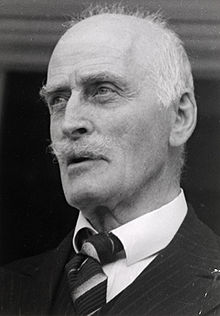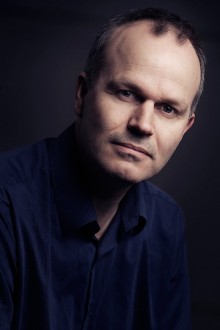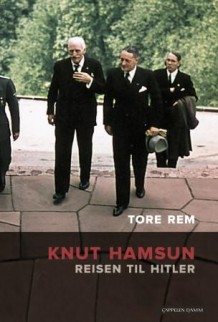A controversial meeting between Norwegian author and Nobel laureate Knut Hamsun and Adolf Hitler in June 1943 is the subject of a new book published in Norway this autumn. It was a meeting that left Hitler fuming and reduced Hamsun to tears, and it’s received good reviews.

Knut Hamsun:Reisen til Hitler (Knut Hamsun: The Journey to Hitler) is the title of the new book by Tor Rem, a professor of English Literature at the University of Oslo. The non-academic documentary work, published by Cappelen Damm, has been widely anticipated amidst the fall rush of new books in Norway, and by Norwegians still grappling with how one of their most important and famous authors could fall for Nazi ideology.
The book traces Hamsun’s vision of Pan-German unity and his fascination with Nazi ideology and mythology. Hamsun’s reputation as an acclaimed writer and his open admiration of Hitler and the national socialist cause remain problematic for many Norwegians to this day, even though Hamsun has been somewhat repatriated in recent years.
Rem uncovered new material while working on the book, including Josef Goebbels’s diaries. “I’d been fascinated with the phenomenon and problem presented by Hamsun and what was one of the Norway’s most perverted moments in history.” Rem told newspaper Dagsavisen. “It was a case of a small nation’s biggest author meeting the world’s biggest tyrant.”
Rem has called the meeting between Hamsun and Hitler “one of the most sensational and perverted episodes in my nation’s modern history” and claimed it’s often treated in apologetic fashion. “I thought it was time to face it head on and as openly as possible, and that it was well-deserving of book-length treatment,” Rem said. “I’d thought of this idea for years and am pleased no one else seized upon it before I was ready.”

Rem told Dagsavisen that some of the new material was recovered from both Norwegian and German war archives. The diaries of Josef Goebbels, made available in their entirety, reveal “the Nazi propaganda minister’s ardent worship of Hamsun’s literary works,” Rem said. “No writer is mentioned as often as Hamsun is in the diaries.” The mutual admiration between the two men seems to have been reciprocal, with Hamsun famously donating money from his Nobel Prize for literature (won in 1920) to Goebbels.
The unique relationship between Goebbels and Hamsun inevitably led Hamsun to Hitler’s lair in the Berghof in southern Bavaria. According to Rem, quoting Hamsun’s biographer, Ingar Sletten Kolloen, Hamsun actively “used his fame to gain an audience with Hitler.” Hamsun’s view of his role as writer was key where “he (Hamsun) felt that as a writer he had a special responsibility for Norway’s destiny.” Hamsun’s anti-modernist and conservative views fit neatly into the prevailing national socialist new order ideology in Europe popular at that particular moment in history.
Hamsun’s meeting with Hitler, though, was clearly motivated by a desire to persuade Hitler to strengthen Norway’s puppet wartime minister Vidkun Quisling’s position at home and to secure a stronger position for Norway in the Third Reich. He wanted Hitler to remove the Norwegian-based German reichskommissar, Josef Terboven and replace him with Quisling.

Hitler also had his reasons for meeting Hamsun. Hamsun was adored by the Nazi elite and was seen as the ideal representative of high culture at that time. Culture could be projected as a morale boost in a troubled Nazi Germany. For Hamsun, the whole idea misfired and his request was seen as a challenge to Hitler’s authority. Hitler was furious and Hamsun was reduced to tears.
“We know of no other example of someone speaking up against the Führer,” Rem told Dagsavisen. This event and its outcome are often interpreted as sign that Hamsun didn’t entirely support the Nazi project.
“Quite the opposite, Hamsun wanted to secure Quisling’s position at home.” Rem told Dagsavisen. “But my main concern, however, is with the journey made by a literary genius into the darkest corners of European history, the clash between two authorities from different fields, the literary and the political, and the uses to which culture was exploited in Nazi Germany. Earlier accounts have hardly grasped the significance of what was happening during this particular phase of the war.”
The book is structured around two journeys in Hamsun’s long life. The first refers to Hamsun’s life journey and what formed him before he met Hitler in 1943. The second, the shorter of the two, is based on Hamsun’s seven-day trip from Oslo to Vienna, Berlin and the Berghof and is the primary focus of the book.
Critics have given the book high acclaim in Norwegian newspapers during the past week. Rem’s work has been called “useful, exciting and overwhelmingly documented,” with one review claiming that the book “sheds new light on Hamsun’s path to Naziism … bringing richly detailed knowledge to one of the 20th century’s most historic meetings that’s surrounded by myth.”
Knut Hamsun’s final journey ended with his death on February 19, 1952 at the age of 92. His misguided meeting with Hitler left him unswayed in his support for Hitler. He even wrote an obituary on hearing of Hitler’s death by suicide and remained committed to the nationalist socialist cause right to the very end.
newsinenglish.no/Audrey Andersen

